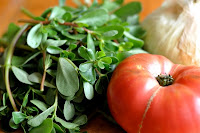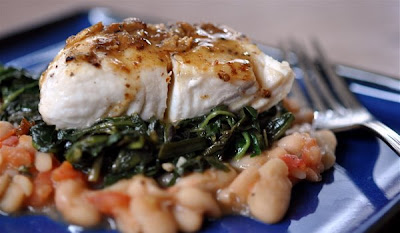 This post is featured in Volume 7 of the Good Life Report. Subscribe here.
This post is featured in Volume 7 of the Good Life Report. Subscribe here.
Ray Bradbury famously waxed nostalgic about his family’s love of dandelion wine. The story first appeared in Gourmet magazine and conjured a mostly lost bucolic America where everyone owned a wine press and the hated weed of today was thought of in much gentler terms. Bottled sunshine he called the tonic they made in the cellar. Even though dandelions are predominantly harvested in spring, the writing evokes thoughts of endless summer days, backyard baseball games, and kids with fishing poles riding bikes down to the local pond—the sort of stuff our current crop of post-structuralists might call a simulacra.
Sometimes I think I caught the tail end of that America in my own childhood, when there were still woodlots to roam near my family’s home and fireflies lit up the nighttime sky. Now most of us live in planned communities or the city. It’s paved. It’s crowded. But there are still plenty of dandelions.
 The other day I went looking for six cups worth of the jaunty yellow petals in order to make wine. I started in my own tiny backyard, picking every one in sight. Then the front yard and down the block. Soon I was in front of the local elementary school, where last year I struck a bonanza of dandies, but a groundskeeper had already beat me to it with his John Deere. I continued on toward busy Rainier Avenue, once the gathering arterial for Italian immigrants in Seattle. They called the Rainier Valley “Garlic Gulch” back then. Now, after several successions, it’s largely Southeast Asian.
The other day I went looking for six cups worth of the jaunty yellow petals in order to make wine. I started in my own tiny backyard, picking every one in sight. Then the front yard and down the block. Soon I was in front of the local elementary school, where last year I struck a bonanza of dandies, but a groundskeeper had already beat me to it with his John Deere. I continued on toward busy Rainier Avenue, once the gathering arterial for Italian immigrants in Seattle. They called the Rainier Valley “Garlic Gulch” back then. Now, after several successions, it’s largely Southeast Asian.
I walked through the community garden and found some beautiful bloomers. A middle-aged Laotian woman tilling her plot wanted to know what I was up to. I explained the culinary and medicinal benefits of Taraxacum officinale, how it’s much more nutritious than virtually anything we can grow ourselves, and she pointed me toward a burned-out husk of a house down the block. She told me an involved story about the fire and how her people wanted to help the owner rebuild but instead he was sitting on his hands. “He lazy but he good man,” she said. “I tell him you pick there.” This seemed like a legitimate enough invitation to me.
 Indeed it was a dandy heaven. When not molested by the mower, dandelions grow tall and robust, angling their Cheshire Cat grins toward the solar life-force. I picked the front and then slipped around back, which is where Dandelion Nirvana truly opened up before me. There was an abandoned car and a loud autobody shop on the other side of the fence. A black cat prowled a hedgerow. This yard hadn’t been attended to in years! It was a sea of warm, inviting yellow.
Indeed it was a dandy heaven. When not molested by the mower, dandelions grow tall and robust, angling their Cheshire Cat grins toward the solar life-force. I picked the front and then slipped around back, which is where Dandelion Nirvana truly opened up before me. There was an abandoned car and a loud autobody shop on the other side of the fence. A black cat prowled a hedgerow. This yard hadn’t been attended to in years! It was a sea of warm, inviting yellow.
I must have lost myself in the picking, because when I looked up I saw an old man sitting on the back stoop pulling a Budweiser out of a paper bag. It was 11 in the morning, and I decided this was a fairly valid maneuver on such an unseasonably hot April day. I picked my way over to him.  He offered me the other can of beer in the bag, which I accepted.
He offered me the other can of beer in the bag, which I accepted.
“You police?”
No, I assured him, I was not. He was Laotian, too. His name was In Keow and he was 69 years old. Though the language barrier between us was tough, we persevered. His grandfather had once owned this home, he said. Next door lived a Vietnamese man. He said he was retired, that he had worked very hard, and that he would still work—but only for cash, no check. He was adamant about this last point. We sipped our beers in the hot morning sun.
In Keow was amused by my stoop labor in the dandelion patch. He had social security arriving once a month and some other unspecified payouts. Making wine—and spending hours plucking little dandelion petals to do it—was definitely not on his agenda. “I go to store,”he said proudly. “I buy beer.” As for me, I wasn’t about to argue with that logic. Springtime in America has never quite been what they say it used to be.
 To make a simple Dandelion Wine, I followed the instructions of Pattie Vargas and Rich Gulling in Making Wild Wines & Meads. Combine 6 cups dandelion petals, 1 lb raisins, 2 lbs sugar, 1 tbsp acid blend, and 1 gallon boiling water into sanitized bucket. A day later mix a starter culture of 1 1/2 cups orange juice, 1 tsp yeast nutrient, and 1 package wine yeast in a jar, shake it up, and let it sit until bubbly, one to three hours. Pour starter culture into the vat along with 1 tsp pectic enzyme and loosely cover. Rack after three days into air-locked container, then rack again three months later and bottle. Wait another six months—until the depths of gloomy winter—to enjoy a taste of bottled sunshine.
To make a simple Dandelion Wine, I followed the instructions of Pattie Vargas and Rich Gulling in Making Wild Wines & Meads. Combine 6 cups dandelion petals, 1 lb raisins, 2 lbs sugar, 1 tbsp acid blend, and 1 gallon boiling water into sanitized bucket. A day later mix a starter culture of 1 1/2 cups orange juice, 1 tsp yeast nutrient, and 1 package wine yeast in a jar, shake it up, and let it sit until bubbly, one to three hours. Pour starter culture into the vat along with 1 tsp pectic enzyme and loosely cover. Rack after three days into air-locked container, then rack again three months later and bottle. Wait another six months—until the depths of gloomy winter—to enjoy a taste of bottled sunshine.
Like this:
Like Loading...
 You’ll be amazed by the results. Purslane has a crunchy texture and a complex flavor that marries perfectly with the acidic tomato juice and sweetness of the onion. Jon Rowley turned me onto this salad last summer at an oyster fest and we ate it again the other day when I dropped by his house to pilfer a few of the shoots for my own garden.
You’ll be amazed by the results. Purslane has a crunchy texture and a complex flavor that marries perfectly with the acidic tomato juice and sweetness of the onion. Jon Rowley turned me onto this salad last summer at an oyster fest and we ate it again the other day when I dropped by his house to pilfer a few of the shoots for my own garden. 






























